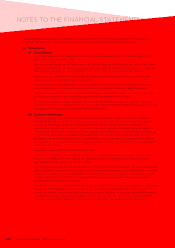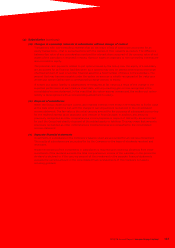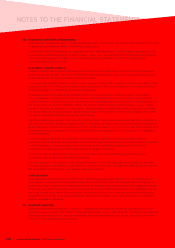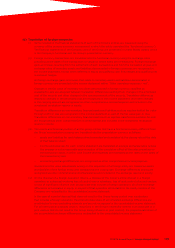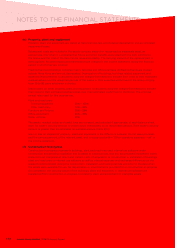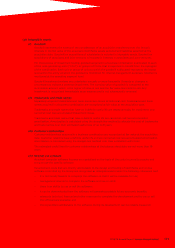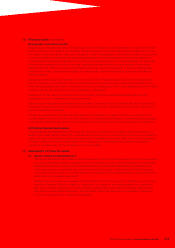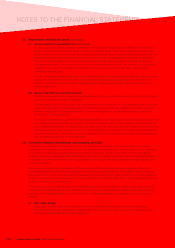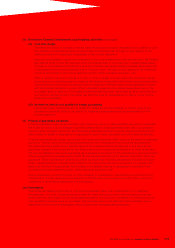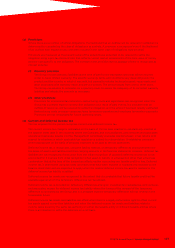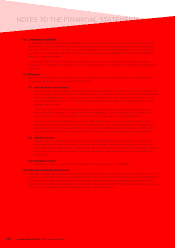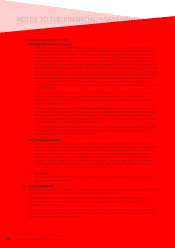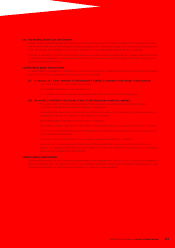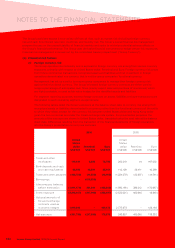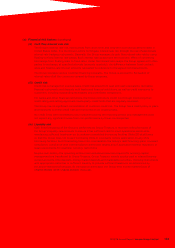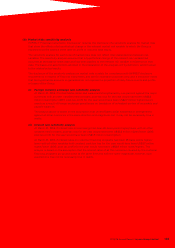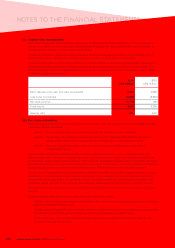Lenovo 2016 Annual Report Download - page 178
Download and view the complete annual report
Please find page 178 of the 2016 Lenovo annual report below. You can navigate through the pages in the report by either clicking on the pages listed below, or by using the keyword search tool below to find specific information within the annual report.
176 Lenovo Group Limited 2015/16 Annual Report
NOTES TO THE FINANCIAL STATEMENTS
2 SIGNIFICANT ACCOUNTING POLICIES (continued)
(n) Trade and other receivables
Trade receivables are amounts due from customers for merchandise sold or services performed in the
ordinary course of business. Majority of other receivables are amounts due from subcontractors for part
components sold in the ordinary course of business. Trade and other receivables are recognized initially at
fair value and subsequently measured at amortized cost using the effective interest method, less provision for
impairment.
If collection of trade and other receivables is expected in one year or less (or in the normal operating cycle of
the business if longer), they are classified as current assets. If not, they are presented as non-current assets.
(o) Cash and cash equivalents
For the purposes of the cash flow statement, cash and cash equivalents mainly comprise cash on hand,
deposits held at call with banks, other short-term highly liquid investments which are subject to an
insignificant risk of changes in value, and bank overdrafts. Bank overdrafts are shown within borrowings in
current liabilities on the balance sheet.
(p) Share capital
Ordinary shares are classified as equity.
Incremental costs directly attributable to the issue of new shares or options are shown in equity as a
deduction, net of tax, from the proceeds.
Where any group company purchases the Company’s equity share capital (treasury shares), the consideration
paid, including any directly attributable incremental costs (net of income taxes), is deducted from equity
attributable to the Company’s equity holders until the shares are cancelled or reissued. Where such shares are
subsequently reissued, any consideration received (net of any directly attributable incremental transaction
costs and the related income tax effects) is included in equity attributable to the Company’s equity holders.
(q) Borrowings and borrowing costs
Borrowings are recognized initially at fair value, net of transaction costs incurred. Transaction costs are
incremental costs that are directly attributable to the acquisition, issue or disposal of a financial asset or
financial liability, including fees and commissions paid to agents, advisers, brokers and dealers, levies by
regulatory agencies and securities exchanges, and transfer taxes and duties. Borrowings are subsequently
stated at amortized cost; any difference between the proceeds (net of transaction costs) and the redemption
value is recognized in the income statement over the period of the borrowings using the effective interest
method.
Borrowings are classified as current liabilities unless the Group has an unconditional right to defer settlement
of the liability for at least 12 months after the balance sheet date.
General and specific borrowing costs directly attributable to the acquisition, construction or production of
qualifying assets, which are assets that necessarily take a substantial period of time to get ready for their
intended use or sale, are added to the cost of those assets, until such time as the assets are substantially
ready for their intended use or sale.
All other borrowing costs are recognised in profit or loss in the period in which they are incurred.
(r) Trade and other payables
Trade payables are obligations to pay for part components or services that have been acquired in the ordinary
course of business from suppliers. Majority of other payables are obligations to pay for finished goods that
have been acquired in the ordinary course of business from subcontractors. Trade and other payables are
recognized initially at fair value and subsequently measured at amortized cost using the effective interest
method.
Trade and other payables are classified as current liabilities if payment is due within one year or less (or in the
normal operating cycle of the business if longer). If not, they are presented as non-current liabilities.


